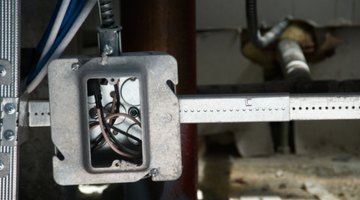How to Use a Digital Insulation Tester
Electrical insulation properties, or resistance, is measured in ohms. Resistance is the amount of effort electricity has to exert to pass through an object, including the wire itself.

The further the distance the current has to travel along the wire, the larger the wire gauge (diameter) must be to be able to carry enough current to counteract the effects of resistance. Digital insulation tester are sensitive enough to read voltage in the micro-ohm range and are used to test for faults (improper connections) in electrical circuits.
-
Plug the black, red and green color-coded leads into the color-coded terminals of the tester. Turn the tester on and follow the display prompts in setting the test voltage, using the voltage adjustment (up or down) buttons to scroll through the range of voltages. Observe the resistance range reading of the selected voltage on the display.
-
Press the “Start” button and connect the lead clips of the tester when prompted. Attach the black lead clip to the insulation of the wire (if testing a wire) or the object casing (if testing an object such as an appliance). Attach the red lead to the hot wire of the circuit and the green lead to the grounding plug or rod. Press the “Test” button to begin the test.
-
Wait for the tester to cycle through the test functions. When finished, the tester displays the insulation resistance, in ohms. Compare the reading to confirm if it is in the accepted resistance range.
-
Push the “End” function and wait for the display to confirm the voltage has been discharged from the meter. Disconnect the tester lead clips.
Warning
Do not touch or disconnect the leads until the meter has confirmed the voltage has been discharged or you risk being shocked.
References
- “Wring 1-2-3”; Steve Corey; 2005
- “Practical Troubleshooting of Electrical Equipment and Control Circuits”; Mark Brown; 2004
Photo Credits
- Jupiterimages/Photos.com/Getty Images
- Jupiterimages/Photos.com/Getty Images
More Articles



